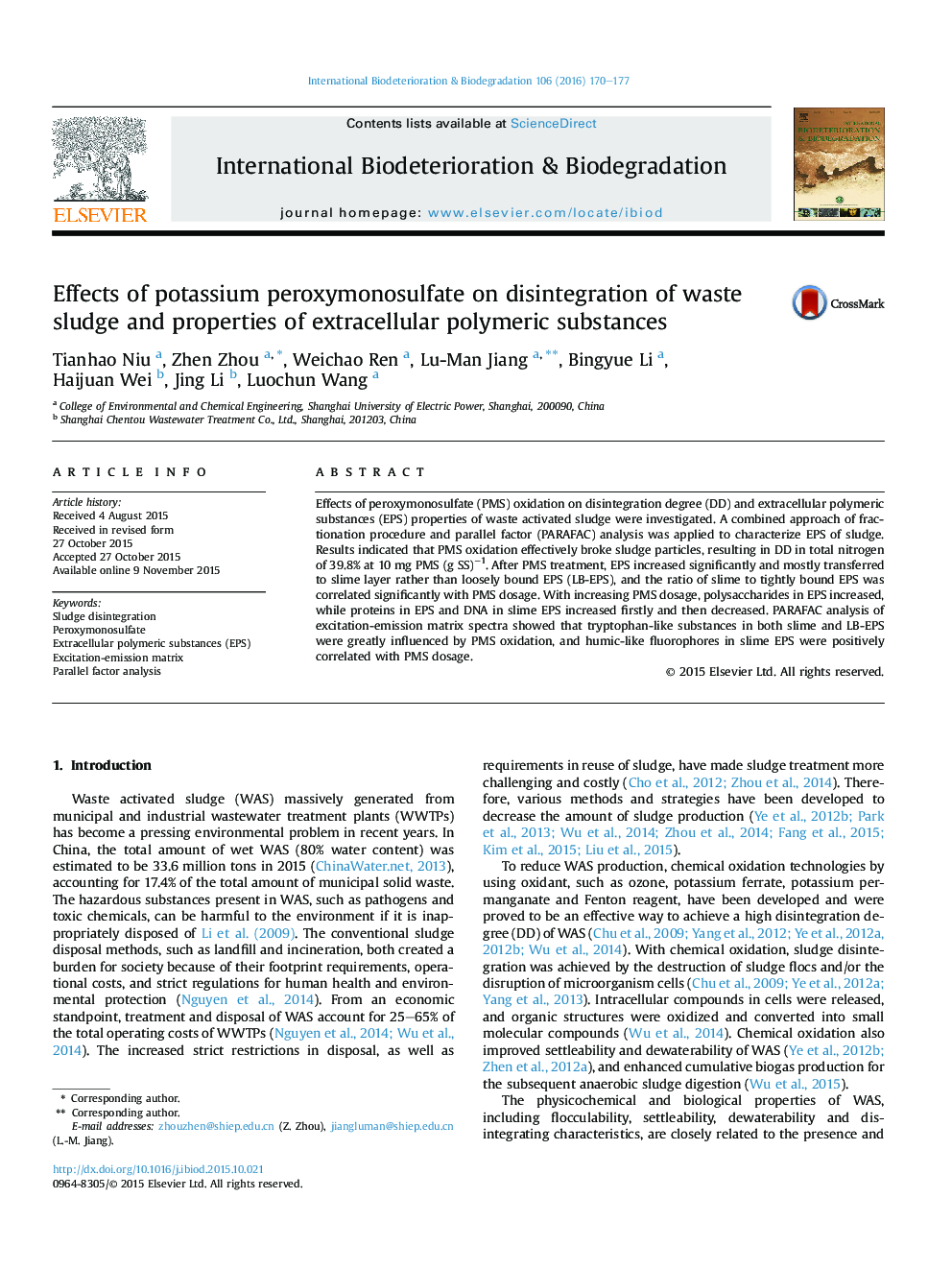| Article ID | Journal | Published Year | Pages | File Type |
|---|---|---|---|---|
| 4364300 | International Biodeterioration & Biodegradation | 2016 | 8 Pages |
•Peroxymonosulfate (PMS) oxidation effectively decreased particle size of sludge.•PMS oxidation achieved sludge disintegration degree of 39.8% at 10 mg PMS/g SS.•EPS increased greatly and mostly transferred to slime layer after PMS disintegration.•The ratio of slime to tightly bound EPS was correlated significantly with PMS dosage.•Tryptophan matters in both slime and LB-EPS were greatly influenced by PMS oxidation.
Effects of peroxymonosulfate (PMS) oxidation on disintegration degree (DD) and extracellular polymeric substances (EPS) properties of waste activated sludge were investigated. A combined approach of fractionation procedure and parallel factor (PARAFAC) analysis was applied to characterize EPS of sludge. Results indicated that PMS oxidation effectively broke sludge particles, resulting in DD in total nitrogen of 39.8% at 10 mg PMS (g SS)−1. After PMS treatment, EPS increased significantly and mostly transferred to slime layer rather than loosely bound EPS (LB-EPS), and the ratio of slime to tightly bound EPS was correlated significantly with PMS dosage. With increasing PMS dosage, polysaccharides in EPS increased, while proteins in EPS and DNA in slime EPS increased firstly and then decreased. PARAFAC analysis of excitation-emission matrix spectra showed that tryptophan-like substances in both slime and LB-EPS were greatly influenced by PMS oxidation, and humic-like fluorophores in slime EPS were positively correlated with PMS dosage.
Graphical abstractFigure optionsDownload full-size imageDownload as PowerPoint slide
